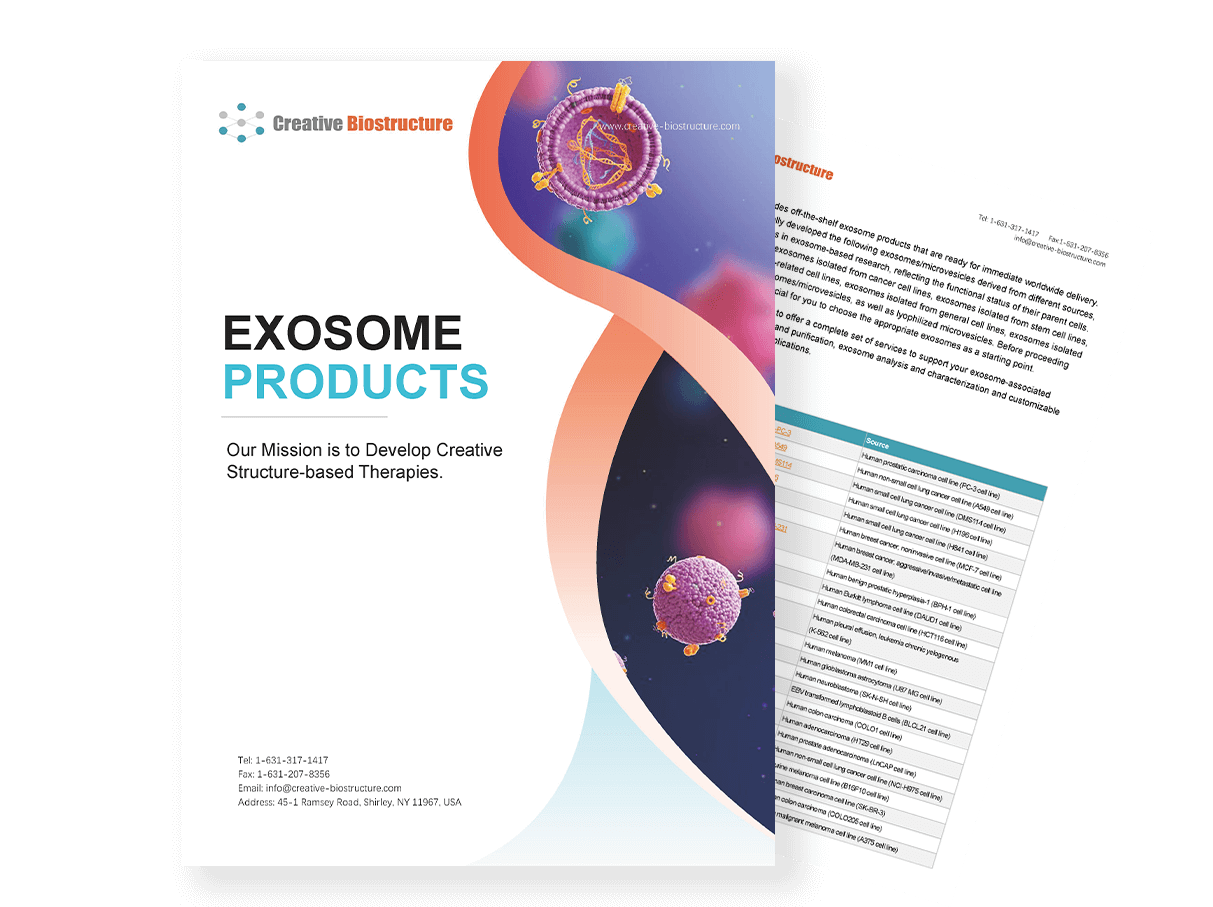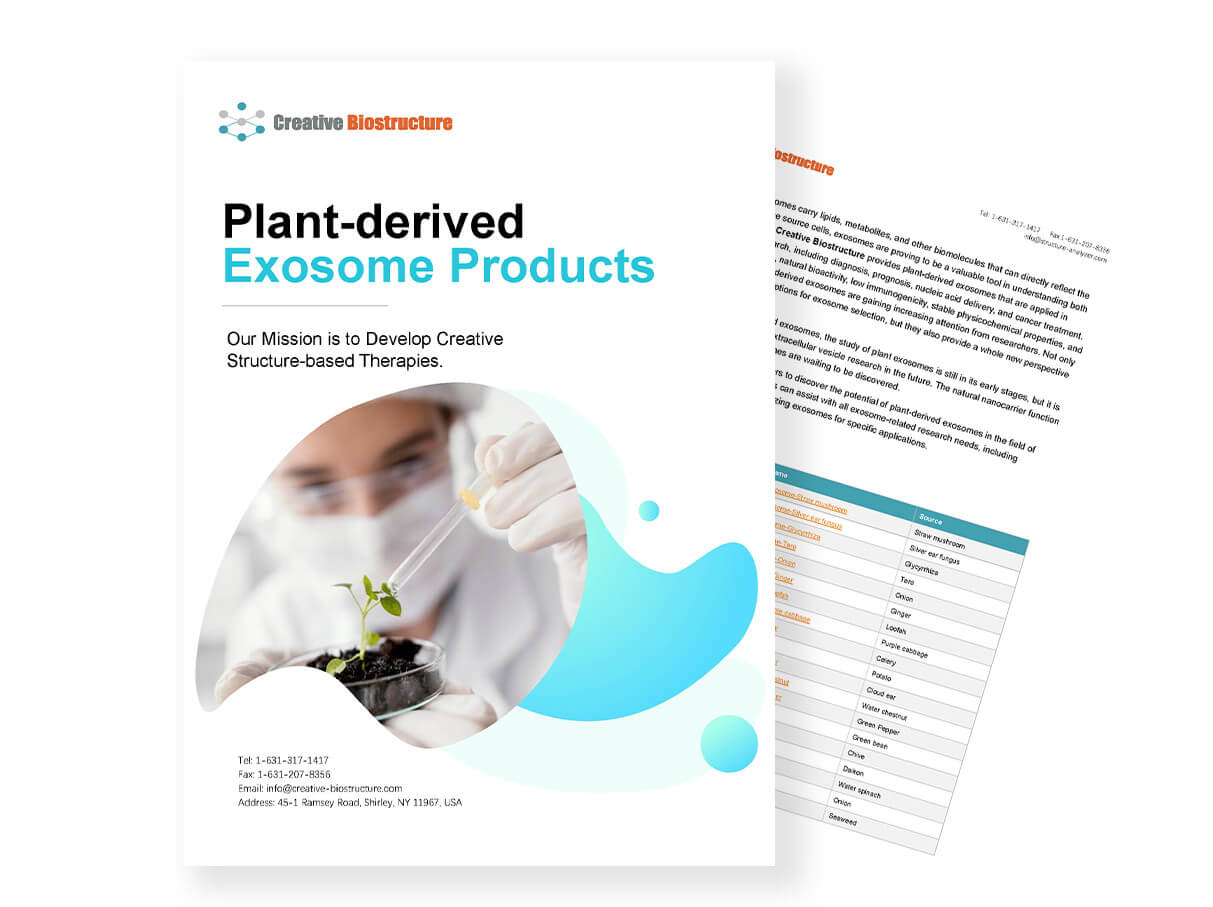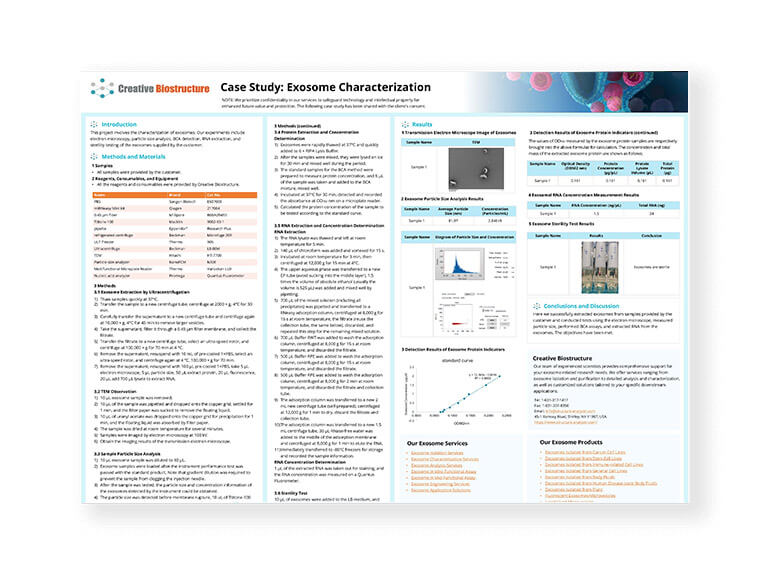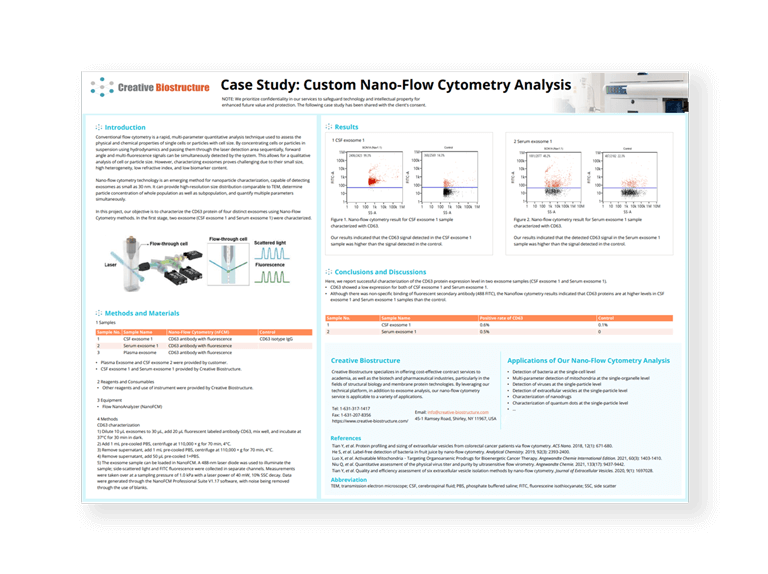Exosome Characterization Services
Creative Biostructure provides exosome characterization services for our customers. Our exosome research team has many years of experience and can offer a range of services, including exosome isolation, purification, identification, and characterization.
Why Do You Need to Characterize Exosomes?
- Understanding Functionality: Exosomes play key roles in intercellular communication, transferring biomolecules like proteins, RNA, and lipids between cells. Characterizing exosomes helps in understanding their functions in various physiological and pathological processes.
- Biophysical Properties: Understanding the biophysical properties of exosomes, such as size, shape, and surface markers, is essential for elucidating their interactions with target cells and tissues. Characterization techniques provide insights into these properties, guiding the design of exosome-based therapeutics.
- Biomarker Discovery: Exosomes are stable in biological fluids and hold promise as biomarkers for various diseases. Characterization techniques aid in identifying specific exosomal markers associated with disease states, facilitating early diagnosis and prognosis.
- Quality Control: It's crucial to characterize exosomes to ensure their purity, concentration, size distribution, and cargo content meet specific criteria. This helps maintain consistency and reproducibility in experiments.
- Therapeutic Development: Exosomes are being explored as potential therapeutic vehicles for drug delivery and regenerative medicine. Proper characterization is essential for ensuring the efficacy and safety of exosome-based therapies.
Exosome Characterization Services at Creative Biostructure
We usually characterize the isolated exosomes at three levels to facilitate downstream applications:
- observation of exosome morphology
- analysis of exosome size and size distribution
- identification of exosome surface markers
Creative Biostructure has developed multiple protocols to comprehensively characterize the characteristics of exosomes using various technologies, such as fluorescence-activated cell sorting (FACS), nanoparticle tracking analysis (NTA), cryo-electron microscopy (Cryo-EM), immunoelectron microscopy, Western blot (WB), and mass spectrometry (MS).
Visualization by Electron Microscopy
Transmission electron microscopy (TEM) and scanning electron microscopy (SEM), along with other types of electron microscopes, provide direct visualization of particle morphology, making them useful for identifying the presence and integrity of exosomes.
 Figure 1. Electron micrographs of exosomes. Left: TEM imaging;
Right: Cryo-TEM imaging. (Chen Zhang, et al. 2020; Anton Emelyanov, et al. 2020)
Figure 1. Electron micrographs of exosomes. Left: TEM imaging;
Right: Cryo-TEM imaging. (Chen Zhang, et al. 2020; Anton Emelyanov, et al. 2020)
Nanoparticle Tracking Analysis
Nanoparticle tracking analysis (NTA) is a sensitive method for calculating particle size distribution and concentration by detecting particles through optical principles. It visualizes light scattered from exosomes or microvesicles in liquid suspension using a focused laser beam and a light microscope. This provides data on particle count and size distribution. While NTA identifies the number and size of particles, it cannot confirm if they are exosomes or distinguish them from other nanoparticles. NTA offers simpler sample processing, preserves the original state of exosomes better, and provides faster detection compared to other methods.
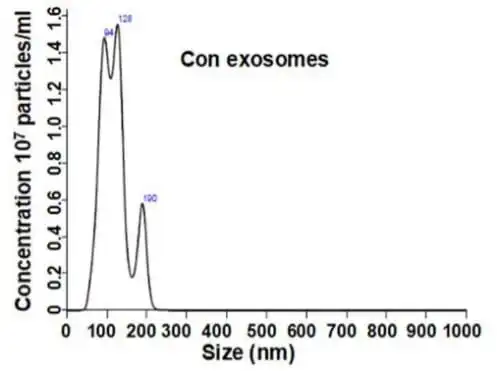 Figure 2. Nanoparticle tracking analysis
of exosomes. (Chen Zhang, et al. 2020)
Figure 2. Nanoparticle tracking analysis
of exosomes. (Chen Zhang, et al. 2020)
Detection of Marker Proteins by Western Blot
Exosomes are identified through Western Blot (WB) assay to detect biomarker proteins such as TSG101, CD81, CD63, and CD9, or other specific proteins present on exosomes. Exosomal membranes contain various proteins, including CD63, CD81, and CD9 involved in exosomal transport, heat shock proteins like HSP60, HSP70, HSPA5, CCT2, and HSP90, as well as cell-specific proteins like A33, MHC-II, CD86, and lactectin. CD63, CD9, CD81, TSG101, HSP70, ALIX, etc., are commonly used extracellular vesicle markers. WB is a widely employed technique for detecting specific proteins in tissue homogenate or extract samples, allowing semi-quantitative estimation based on band size and color intensity on the blot membrane. Thus, it is utilized to identify the presence and expression levels of specific proteins on exosome surfaces.
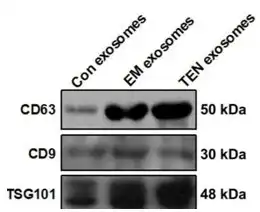 Figure 3. Western blot of marker proteins CD9,
CD63, CD81, and TSG101. (Chen Zhang, et al. 2020)
Figure 3. Western blot of marker proteins CD9,
CD63, CD81, and TSG101. (Chen Zhang, et al. 2020)
Detection of Marker Proteins by Flow Cytometry
In addition to WB, marker proteins in exosomes can also be detected by flow cytometry. This technology is rapid, apt for high-throughput screening, and assesses particle size and volume. It involves labeling exosomes with antibodies targeting specific surface markers, followed by flow cytometry to detect positive expression and identify exosomes. Fluorescence-activated cell sorting (FACS) is a specific application of flow cytometry, which is the predominant tool for analyzing the characteristics of exosomes in suspension by leveraging light scattering properties and sorting them with fluorescently labeled antibodies.
 Figure 4. Flow cytometry of marker proteins
CD9, CD63, CD81, and TSG101. (Chen Zhang, et al. 2020)
Figure 4. Flow cytometry of marker proteins
CD9, CD63, CD81, and TSG101. (Chen Zhang, et al. 2020)
MRI-based Exosome Quantification
Recent studies have shown that novel methods of labeling exosomes with nanomaterials can be traced by magnetic resonance in vivo. Currently, common molecular imaging methods for exosome tracers include optical imaging, magnetic resonance imaging, radionuclide molecular imaging, photoacoustic imaging, and multimodal imaging. The development of these imaging methods is of great significance for studying the role of exosomes in clinical diagnosis and treatment, especially in integrating tumor diagnosis and treatment.
Technology Platforms
Key Advantages
- Comprehensive Analysis: We offer a comprehensive suite of techniques to thoroughly characterize exosomes, including size distribution, morphology, surface marker profiling, and cargo content analysis.
- High Accuracy and Precision: Our state-of-the-art instrumentation and expertise ensure high accuracy and precision in exosome characterization, providing reliable data for your research needs.
- Quality Assurance: Rigorous quality control measures are implemented throughout the characterization process to ensure the reliability and reproducibility of results.
- Expert Support: Our team of experienced scientists provides expert guidance and support at every step of the characterization process, from experimental design to data interpretation.
- Customized Solutions: We tailor our services to meet your specific research objectives, offering flexible options for sample types, analysis parameters, and reporting formats.
Resources
Frequently Asked Questions
-
What specific techniques do you employ for exosome characterization, and how do they ensure accurate and comprehensive analysis?
Our exosome characterization services utilize a combination of high-resolution techniques such as nanoparticle tracking analysis (NTA), electron microscopy, and mass spectrometry. These methods allow us to precisely measure size distribution, morphology, and molecular composition of exosomes, ensuring a thorough understanding of their properties for your research needs.
-
How can I visualize apoptotic bodies, microvesicles, and the exosome pellet obtained through centrifugation?
After centrifugation, distinguishing between exosome pellet and apoptotic body pellet is not possible. To characterize individual extracellular vesicles (EVs), techniques such as Western blotting (WB), flow cytometry (FACS), electron microscopy, and atomic force microscopy can be employed. For larger vesicles, including apoptotic bodies, immunofluorescence imaging can be utilized. Nanoparticle tracking analysis and dynamic light scattering can be utilized to assess size distribution.
-
How do you ensure the reliability and reproducibility of your exosome characterization services?
Our exosome characterization services adhere to strict quality control measures, employing advanced techniques such as nanoparticle tracking analysis, electron microscopy, and protein profiling. Additionally, we validate our results through rigorous quality assessments, ensuring reliability and reproducibility across experiments and samples.
Ordering Process
References
- Van Niel, et al. Shedding light on the cell biology of extracellular vesicles. Nature Reviews Molecular Cell Biology. 2018, 19(4): 213-228.
- Chen Zhang, et al. Plasma exosomal miR-375-3p regulates mitochondria-dependent keratinocyte apoptosis by targeting XIAP in severe drug-induced skin reactions. Science Translational Medicine. Sci Transl Med. 2020, 12(574): eaaw6142.
- Anton Emelyanov, et al. Cryo-electron microscopy of extracellular vesicles from cerebrospinal fluid. PLoS One. 2020, 15(1): e0227949.


